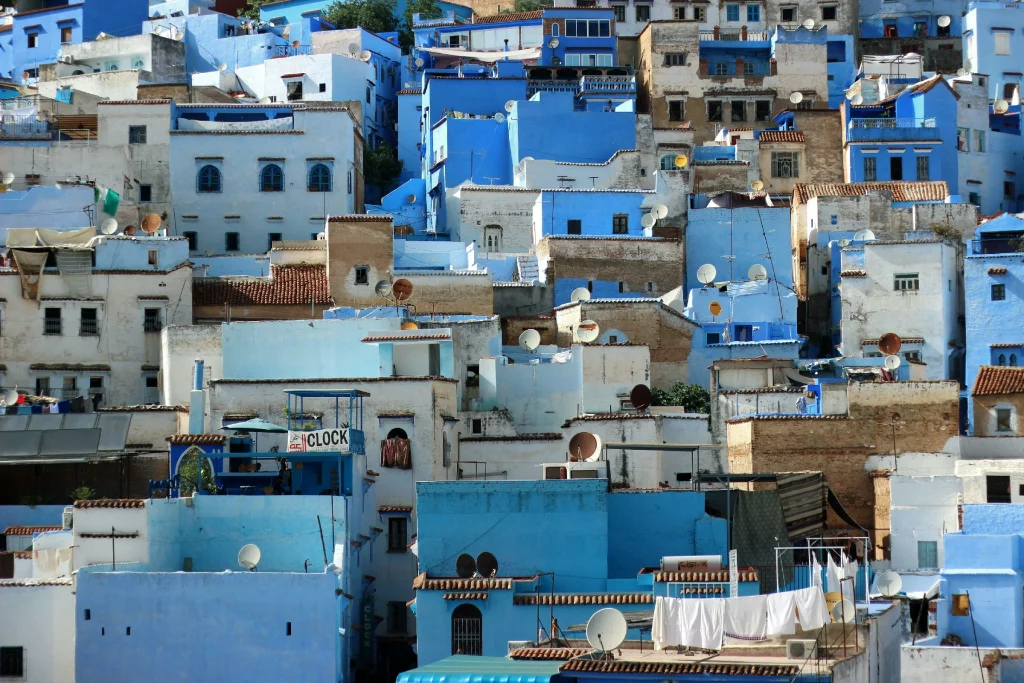
CHEFCHAOUEN
Often referred to as the “Blue Pearl” of Morocco, it’s a picturesque mountain town nestled in the Rif Mountains of northwestern Morocco. It’s renowned globally for its striking blue-painted buildings and charming, winding alleys, creating a unique and dreamy atmosphere.
The most distinctive feature of Chefchaouen is undoubtedly its blue-washed medina. There are several theories about why the houses are painted blue. One popular theory is that the blue symbolizes the sky and heaven, reminding residents of God and a spiritual life. This tradition is often attributed to Jewish refugees who settled here in the 15th century after the Spanish Inquisition. Regardless of the exact reason, the effect is undeniably enchanting, making Chefchaouen a photographer’s paradise.
Chefchaouen was founded in 1471 by Moulay Ali ibn Rachid al-Alami, a descendant of the Islamic Prophet Muhammad. Its initial purpose was to serve as a small fortress (Kasbah) to defend against Portuguese invasions from the coast. It became a refuge for Muslim and Jewish exiles from Spain during the Reconquista, who brought with them elements of Andalusian architecture and culture. The city remained relatively isolated for centuries, which helped preserve its unique character. It was only ceded back to Morocco in 1956 after the end of the Spanish Protectorate.
Akchour Waterfalls and God’s Bridge is about a 30 minute drive. Situated in the Talassemtane National Park conserves Morocco’s fir forests and offers beautiful cascading waterfalls and a spectacular natural rock arch known as God’s Bridge.
